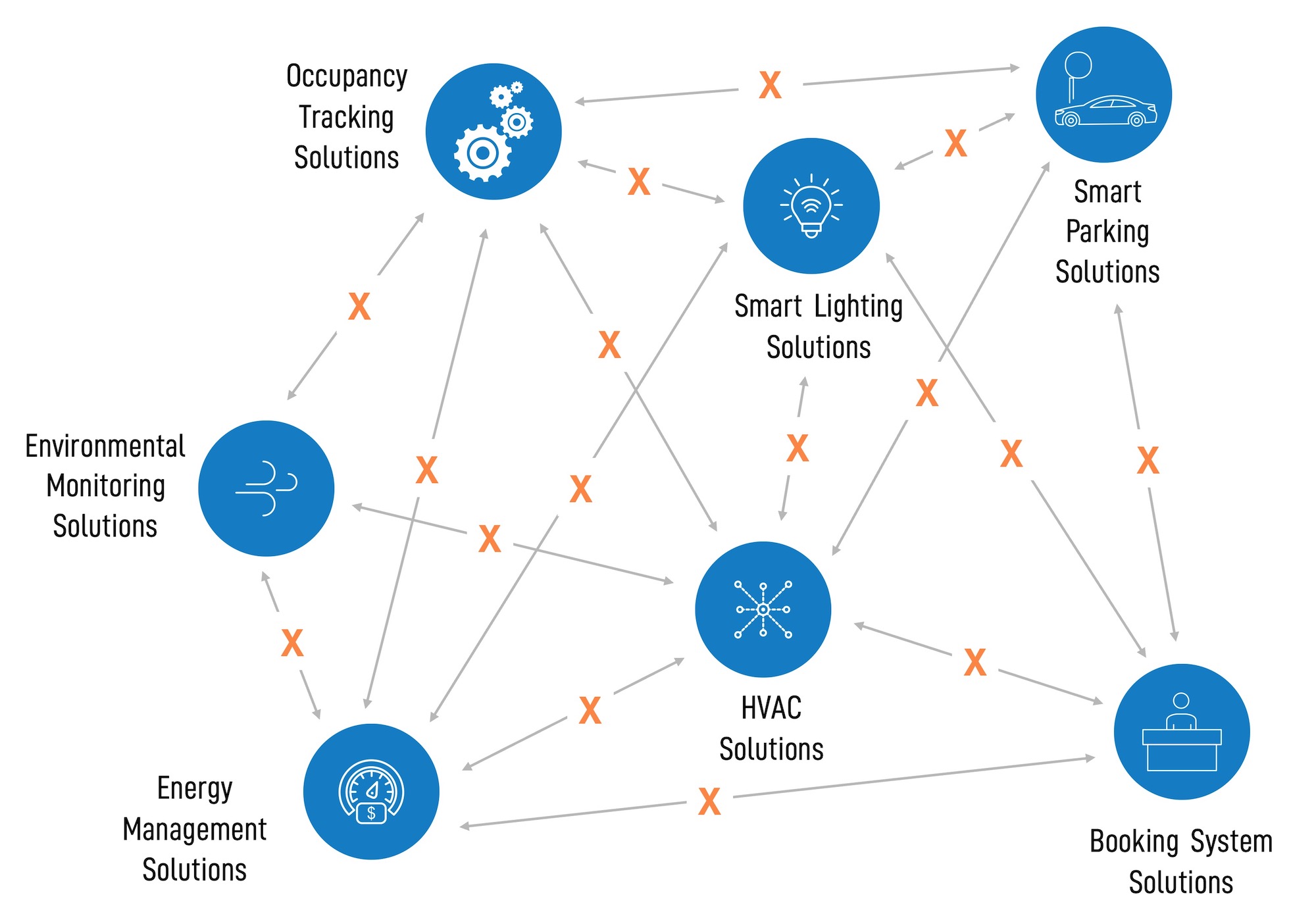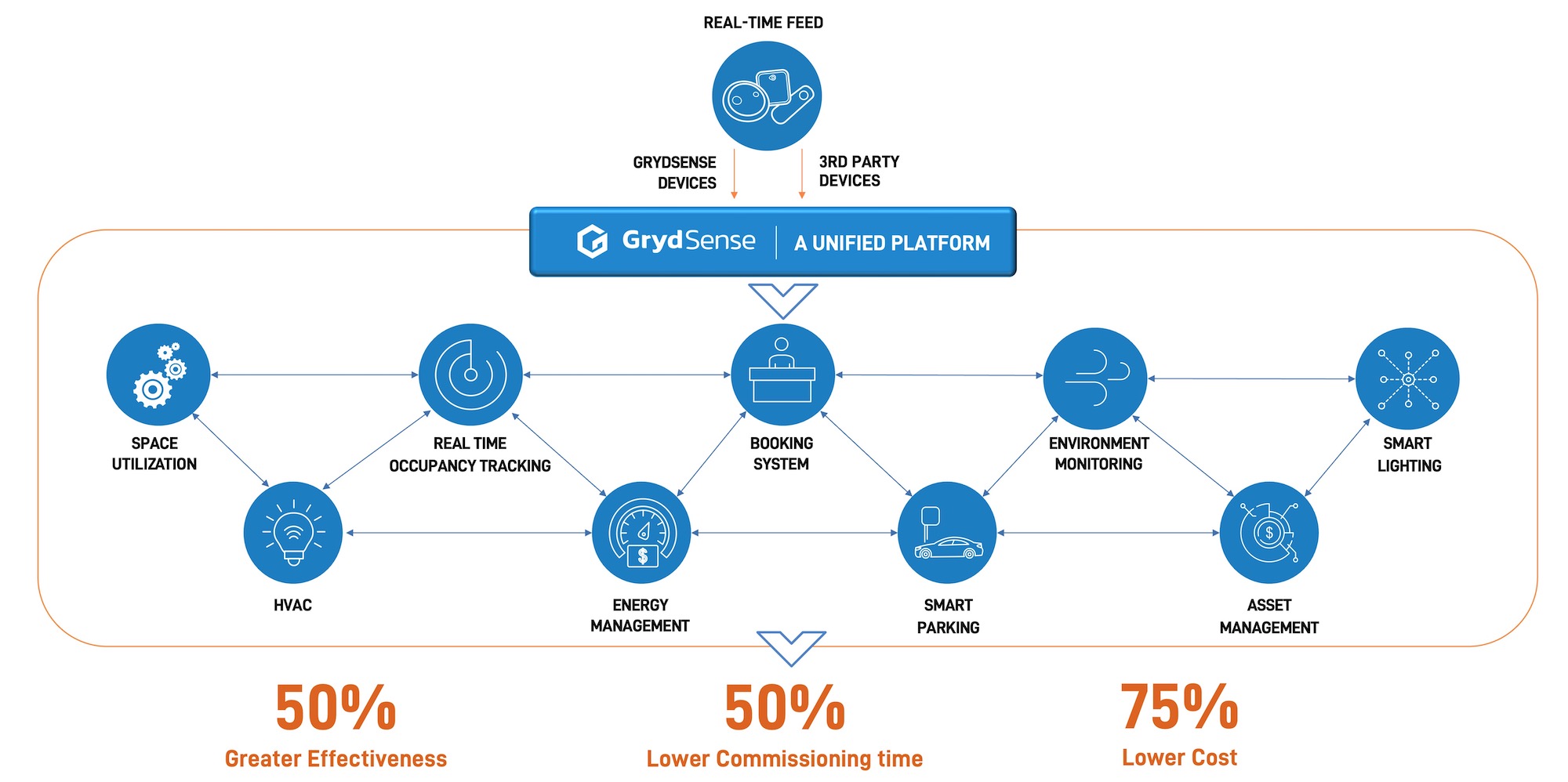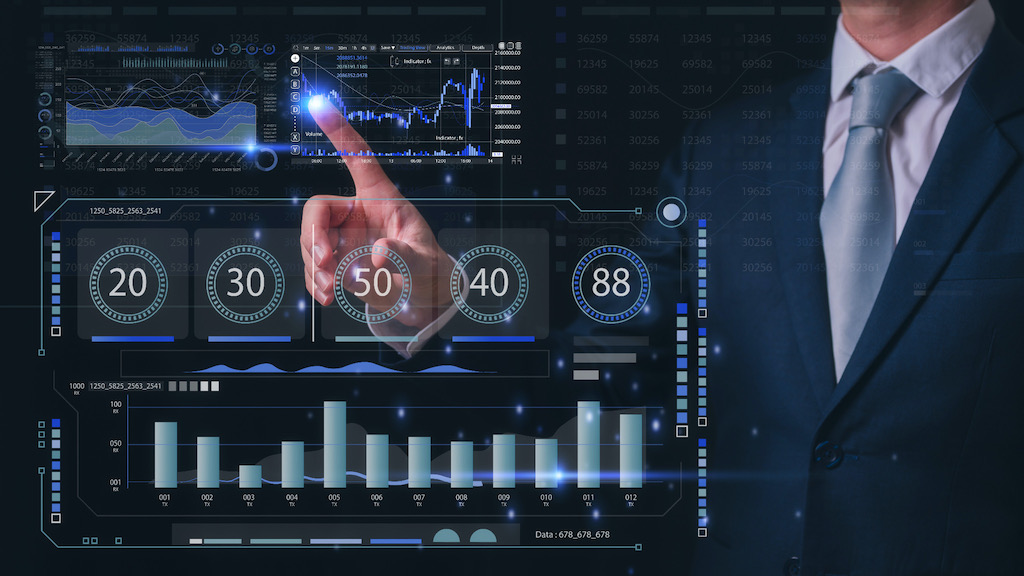Digital transformation is being embraced by more and more organizations looking to streamline their facilities. The adoption of smart solutions for facility management has transformed how real estate is managed. However, the industry faces significant challenges due to the siloed and fragmented nature of current solutions, which result in inefficiencies, higher costs, and lack of real-time response.
In this article, we will explore the pain points of smart solutions and discuss how GrydSense offers a revolutionary data-driven solution. With the integration of real-time data, generation of actionable insights, real-time actuations of building systems, and the use of AI models to efficiently operate building equipment like chillers, AHUs, etc. GrydSense brings a whole new level of intelligence and optimization to real estate spaces.

The Current Industry Landscape: Fragmentation and Inefficiencies
The real estate and property management industry has seen an influx of smart solutions aimed at improving various aspects of building management, such as energy efficiency, occupancy tracking, and environmental monitoring. However, these solutions are often deployed in isolation, creating a fragmented ecosystem that fails to fully leverage the potential of the system. This silo-ed approach leads to several key issues:
1. Lack of Real-Time Actuation: Traditional BMS stacks are not designed to respond to real-time occupancy data. This limitation means that even when data is collected, it is not utilized effectively to make immediate adjustments to building systems like HVAC, lighting, or space utilization
2. Geographical Limitations: Many existing systems are localized, meaning they are only effective within a specific geographical area. This limitation hinders the ability to scale solutions across multiple locations, further complicating management and increasing costs
3. Data Silos: Different solutions often operate independently of one another and are isolated from existing BMS platforms. This lack of integration results in data being trapped in silos, making it difficult to standardize and analyze across systems
4. High Costs: The inefficiencies and fragmentation of current systems lead to significantly higher operational costs. According to industry reports, these inefficiencies can increase costs by as much as 75%
The Impact of Inefficient Data Utilization
The inability to efficiently utilize data in real time has far-reaching consequences. For instance, energy management systems that are not responsive to real-time occupancy data may lead to wasted energy and higher utility costs. Similarly, poor space utilization tracking can result in underused areas and workplace settings, which translates to unnecessary expenses for maintenance and utilities.
Moreover, the lack of standardization in data collection and analysis across different systems can lead to sub-optimal operations. Without a unified platform built on industry standards it becomes challenging to gain a comprehensive view of building performance, making it difficult to make informed decisions about energy use, space allocation, and overall facility management.

The GrydSense Solution: A Unified, AI-Powered Platform
GrydSense addresses these challenges by offering a unified, AI-powered platform that integrates data from various devices and systems into a single, cohesive ecosystem. This platform not only collects data in real time but also analyzes it to provide actionable insights and real-time feedback for optimizing building operations.
1. Real-Time Occupancy Tracking and Space Utilization: GrydSense's platform integrates data from occupancy sensors and other devices to track space usage in real time. This data is then used to optimize space settings, ensuring that areas are used efficiently and reducing the need for excess real estate
2. Smart Lighting and HVAC Management: The platform also includes smart lighting and HVAC controls that respond to real-time occupancy and environmental conditions. This feature allows for dynamic adjustments that improve energy efficiency and occupant comfort
3. Comprehensive Environmental Monitoring: GrydSense provides tools for monitoring and managing indoor environmental conditions, including air quality, temperature, and humidity. These metrics are critical for maintaining a healthy and comfortable indoor environment, particularly in commercial spaces
4. Integration with Existing BMS and Third-Party Solutions: One of the standout features of the GrydSense platform is its ability to integrate seamlessly with existing BMS platforms and third-party solutions. This integration ensures that data from various sources is standardized and can be analyzed holistically, providing a complete picture of building performance
5. AI-Assistant: The GrydSense platform provides various AI assistants to perform seamless facility management. AI assistant models are built and continuously improved to maintain an efficient facility with enhanced occupant experience and sustainable operations moving towards de-carbonization. GrydSense models give the highest priority to the experience of real estate occupants, followed by energy optimization. Such AI assistants aid in faster adoption of smart systems into the buildings and eliminate any human oversight into handling building equipment
Quantifiable Benefits of the GrydSense Platform
The GrydSense platform delivers significant benefits that translate into measurable improvements in building management:
1. Increased Effectiveness: By integrating various systems and providing real-time feedback, GrydSense improves the effectiveness of building management by 50% compared to traditional systems
2. Reduced Costs: The platform's ability to optimize operations leads to a 75% reduction in costs, making it a cost-effective solution for managing large-scale facilities
3. Faster Deployment: GrydSense's pre-integrated product models and AI-driven data analysis significantly reduce commissioning times, allowing for quicker deployment and faster realization of benefits
Conclusion
The challenges posed by the current silo-ed smart systems and BMS solutions in the real estate industry are significant, leading to inefficiencies, higher costs, and sub-optimal operations. GrydSense offers a comprehensive solution that not only integrates data from various sources but also provides real-time, actionable insights that drive efficiency, reduce costs, and enhance sustainability.
As the industry continues to evolve and the need for integrated data-driven solutions grows, platforms like GrydSense will play a critical role in shaping the future of real estate management, making buildings smarter, more efficient, more responsive to the needs of their occupants, more attuned to ESG and other sustainability compliance standards, and setting the foundation for future innovations.
